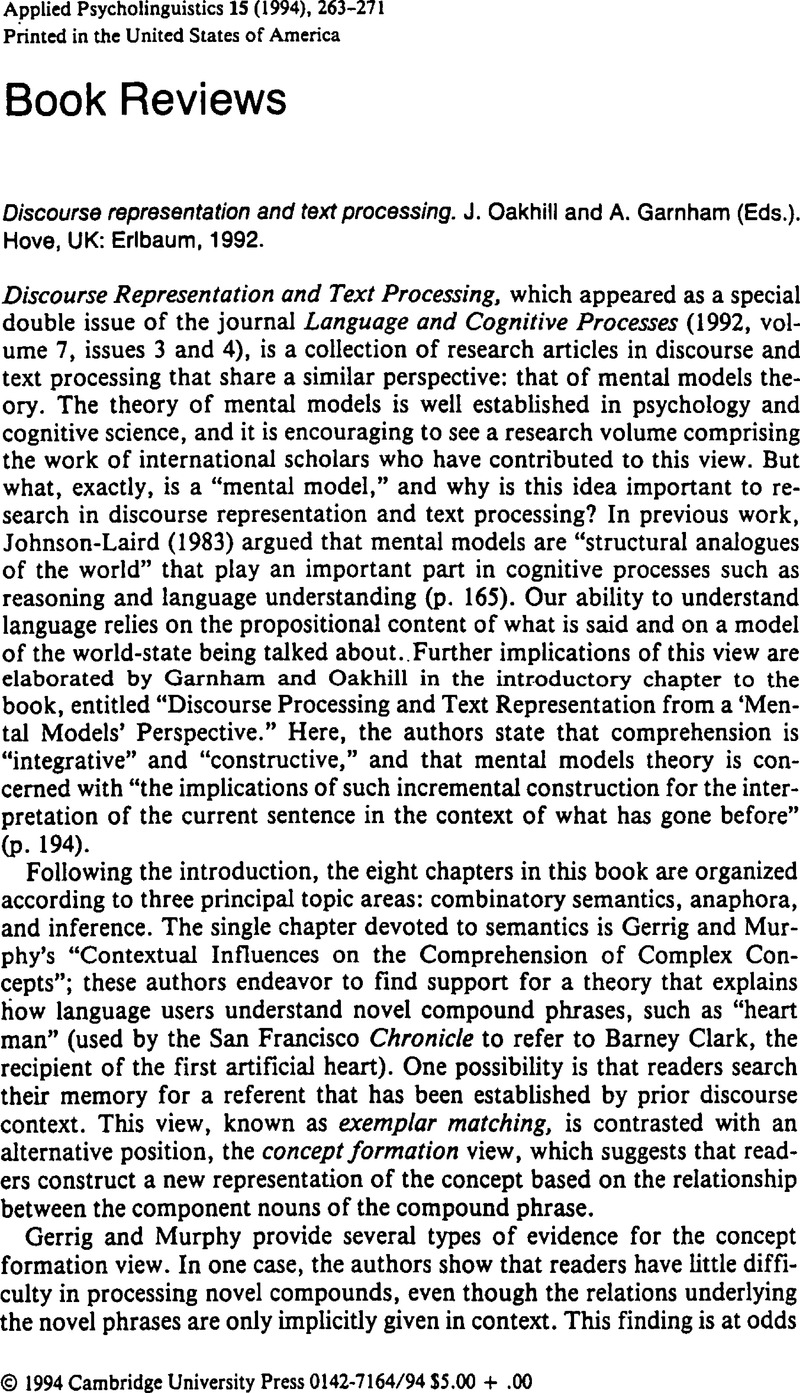No CrossRef data available.
Article contents
Discourse representation and text processing. J. Oakhill and A. Garnham (Eds.). Hove, UK: Erlbaum, 1992.
Published online by Cambridge University Press: 28 November 2008
Abstract
An abstract is not available for this content so a preview has been provided. Please use the Get access link above for information on how to access this content.

- Type
- Book Reviews
- Information
- Copyright
- Copyright © Cambridge University Press 1994
References
REFERENCES
Garnham, A., & Oakhill, J. V. (1985). On-line resolution of anaphoric pronouns: Effects of inference making and verb semantics. British Journal of Psychology, 76, 385–393.Google Scholar
Gernsbacher, M. A. (1991). Comprehending conceptual anaphors. Language and Cognitive Processes, 6, 81–105.Google Scholar
Gernsbacher, M. A., Goldsmith, H. H., & Robertson, R. R. W. (1992). Do readers mentally represent characters' emotional states? Cognition and Emotion, 6, 89–111.CrossRefGoogle ScholarPubMed
Vonk, W. (1984). Eye movements during the comprehension of pronouns. In Gale, A. G. & Johnson, F. (Eds.), Theoretical and applied aspects of eye movement research (pp. 203–212). Amsterdam: North-Holland.Google Scholar
Vonk, W. (1985a). The immediacy of inferences in the understanding of pronouns. In Rickheit, G. & Strohner, H. (Eds.), Inferences in text processing (pp. 205–218). Amsterdam: North- Holland.CrossRefGoogle Scholar
Vonk, W. (1985b). On the purpose of reading and the immediacy of processing pronouns. In Groner, R., McConkie, G. W., & Menz, C. (Eds.), Eye movements and human information processing (pp. 207–215). Amsterdam: North-Holland.Google Scholar


